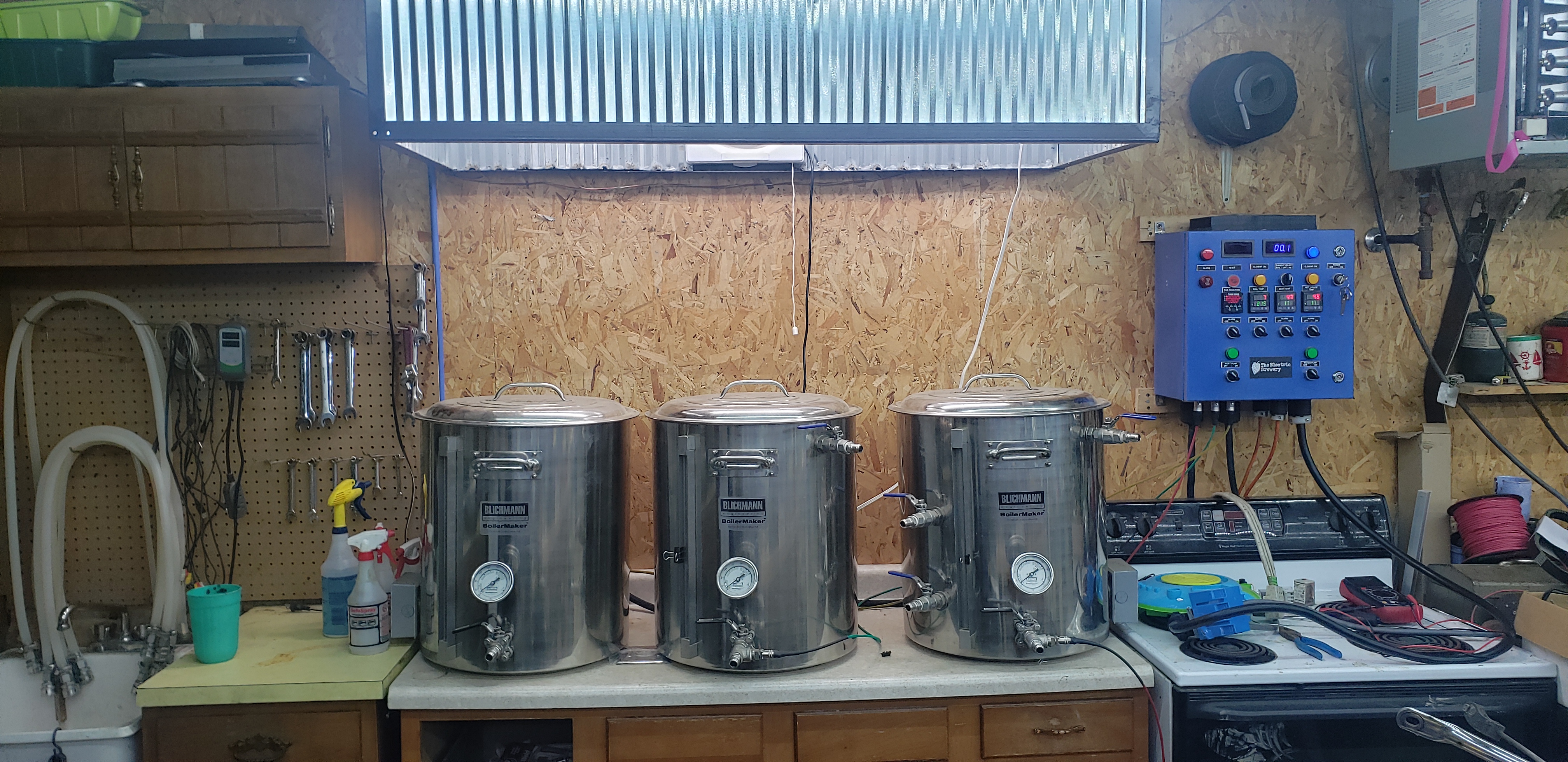All grain does not automatically mean BIAB. Most of your suggestions are fine anyway but I am wondering why people are assuming this.
On his profile,
@Scout has an older picture of his system, which looks to be a 3 vessel (Blichmanns) EHERMS with a 50 amp panel. They all have lids. Sometimes people use a bag in the mash tun for easier cleaning but I'd be real surprised if it doesn't have a false bottom in it already. Throwing a bag into the HLT with the HERMS coil would be messy to clean. Looks like there are two multimeters at the top which is why I believe it is a 50 amp. I can't quite tell but I think his BK is at least 20 gallons. If it is and the system is 50 amps, he could brew two 15 gallon batches back to back in a brew day, or at least 2 tens. Given he's new to all grain brewing, it seems to me it would make more sense to brew some batches using his system as it is designed.
I'd suggest a quick dry run to determine your hose layouts, making sure your pumps can reach all the ports properly and that you have the fittings and quick disconnects that you want. I can't tell if you have a whirlpool port on the BK, but if so, consider that tubing too. Also, the tubing to and from your plate chiller.
Regarding the plate chiller, I have bought these
Garden Hose quick disconnects twice. The first time they only had five pieces and I needed another pair so I bought the newer 6 piece set. They are handy to attach a spray wand for cleanup, another useful item. I liked the first set a lot and had no problems with it and I hope the quality is still good. You can use these on your Therminator. Around a 15 minute hop addition is when I start to set up for chilling and sometimes I don't have enough time like I need to sanitize a fermenter or something pops up. Saves having to screw the connections on and off plus I can swap in my sprayer to begin cleanup.
A hop spider can be something like a cylindrical mesh or it can be a three spoked ring. The spoked version needs a mesh bag. I've used both, I find the cylindrical one useful, mine's 6" diameter and fits my mash paddle nicely which I use to stir the hops. Either spider is helpful because any bits will get into the Therminator and will need flushing. Your false bottom may work better than mine, but I vorlauf before sparging to keep the bits to a minimum. You could just use a mesh bag without the spoked spider if you wanted to wait. You will get tired of that after burning your fingers fishing it out with multiple hop additions.
Note also that the inline oxygen tee I mentioned is attached by a SS union for ease of cleaning if that was something you were interested in at some point. It's not always easy to find stainless steel fittings locally. You may want a street 90 or two or three for your pumps, they help to prevent kinks in silicone tubing.
























































![Craft A Brew - Safale S-04 Dry Yeast - Fermentis - English Ale Dry Yeast - For English and American Ales and Hard Apple Ciders - Ingredients for Home Brewing - Beer Making Supplies - [1 Pack]](https://m.media-amazon.com/images/I/41fVGNh6JfL._SL500_.jpg)





